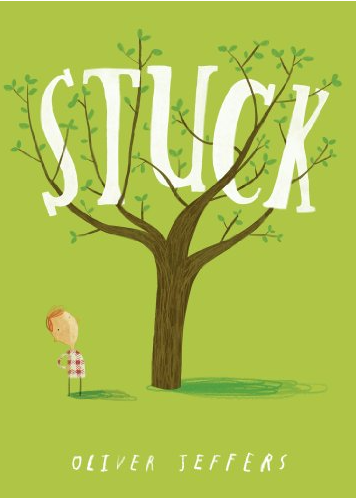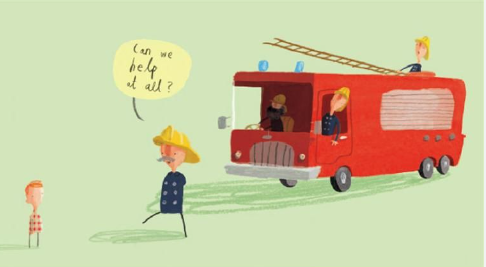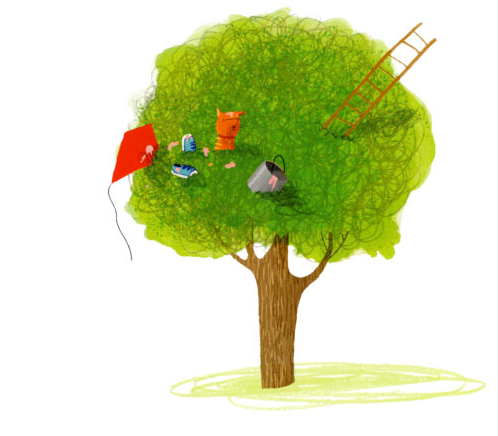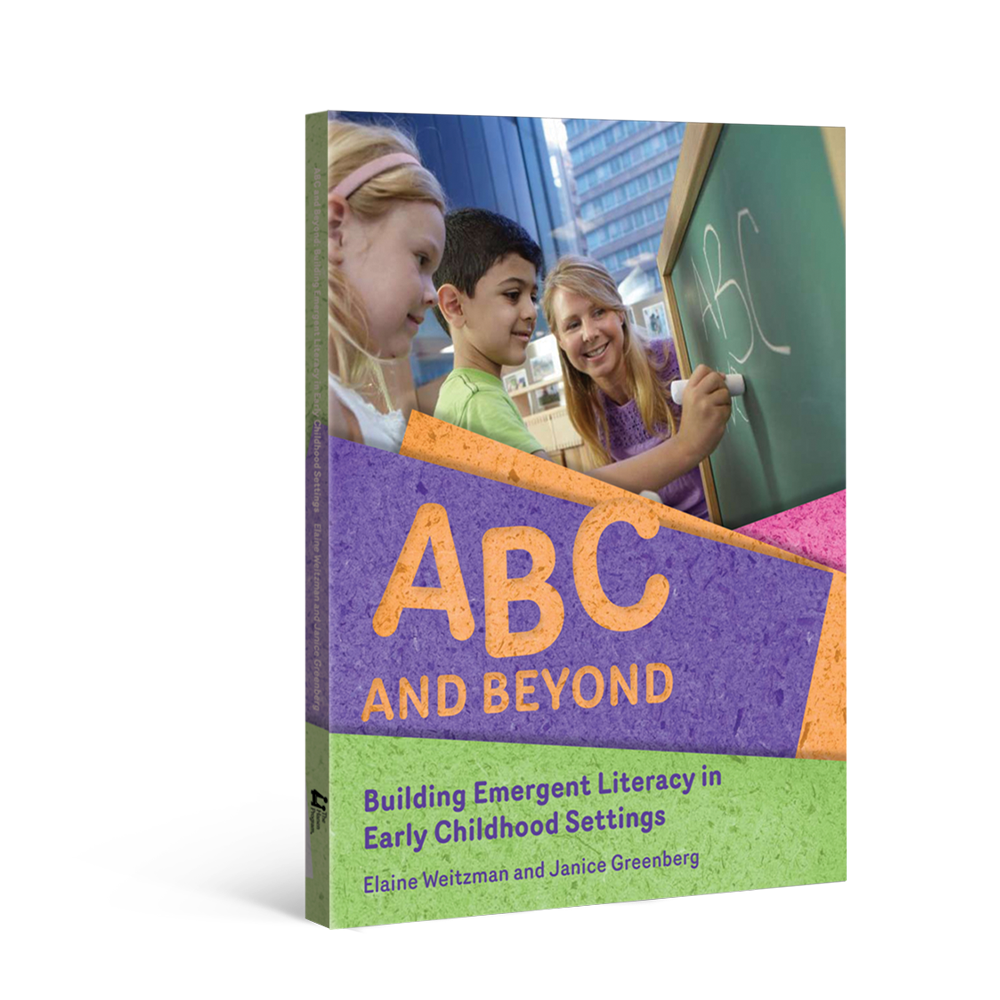This month's Book Nook topic is...
Problem Solving with
Stuck

Many story books revolve around a problem the characters in the story need to solve. When sharing books together, we can get children thinking and talking about how to solve problems. This helps children understand the story more deeply by drawing upon their own knowledge and experiences. Not only does this support the development of problem-solving skills but it sets children up for later reading and writing success.
Let's get started!
The Book:
Stuck by Oliver Jeffers
Why We Chose This Book
This book begins with a big problem. A young boy named Floyd gets his kite stuck in a tree. Floyd tries to pull the kite down from the tree by pulling and tugging at it, but the kite is still stuck. His problem gets bigger when he throws his favourite shoe up at the kite and his shoe also gets stuck. Floyd continues to throw more items into the tree and the problem becomes bigger and bigger.
This story offers many opportunities to discuss the developing problems that occur as more items get stuck in the tree. The story is also quite funny, giving you and the child an opportunity to have lighthearted conversations about how the child might solve this problem if they were in a similar situation as Floyd.
While Reading the Story, Talk About Problem Solving
Because this story revolves around solving an ever-growing problem, talking about problem solving right from the beginning draws on the child’s past experiences and creativity before we see what the character in the story does. The first reading is an excellent opportunity to talk about how the character in the story tries to solve the problem, to evaluate the decisions the character makes and to make predictions about what he might do next. You can do this by making comments or asking questions that help the child actively think about what the character can do to solve the problem and if the character makes good decisions.

You can encourage the child to problem solve by:
- Making thinking-out-loud comments
- Asking questions that build understanding
Making thinking-out-loud comments
When reading Stuck, you can make thinking-out-loud comments. These comments allow the child to see how you are trying to understand the problem and the decisions the character makes. They also give you an opportunity to talk about information that is not actually stated in the book. Unlike questions, comments don’t require a response. However, if you make a comment and then wait, the child may respond and add their own ideas.
For example:
- “I thought Floyd would climb the ladder. I’m trying to figure out why he threw the ladder into the tree instead of climbing it.”
- “I don’t think it is safe to throw things into trees.”
- “The firefighter has an idea. I wonder what the firefighter’s idea is.”

Asking questions
Another way to deepen the child’s understanding of the story’s problem is to ask questions that draw on their knowledge, experience, and reasoning skills. Be sure to give the child lots of time to answer the question. If the child has difficulty answering a question, you can provide a suggestion or two and then continue reading.
For example:
- “Floyd’s kite is stuck in the tree. What would you do if your kite got stuck in a tree?”
- “Floyd has a shoe in his hand. Do you think throwing a shoe at the kite will help? Why?”
- “Floyd has a ladder now. How could he use a ladder to get his kite unstuck?”
- “Here is the fire engine. How could the firefighters get everything out of the tree?”.
Continue Problem Solving After You Read the Story
When you are finished reading the book with the child, you can continue problem solving by asking questions and making comments about what might happen after the story ends. For example, “Even though Floyd got his kite down from the tree, everything else is still stuck in the tree. I wonder if his family could call a crane to get everything down.” Wait for the child to respond. They may add some creative ideas of their own!
You can also go beyond the book to reflect on times when the child had a problem to solve and how they solved it. For example, “Do you remember the time your soccer ball went into the neighbours’ yard? Do you remember how we solved that problem?”
Books provide an excellent opportunity to talk about solving problems together. Encouraging children to think and talk about the main problem in a story helps them develop a deeper understanding of that story and supports future reading and writing success!
Happy reading!
More Resources
The strategies in this Book Nook post are drawn from Hanen’s practical, research-based guidebooks for building emergent literacy. Explore the links below to learn more about how these guidebooks can support you.
For Parents I'm Ready! guidebook
I'm Ready! guidebook
For Educators ABC and Beyond guidebook
ABC and Beyond guidebook
